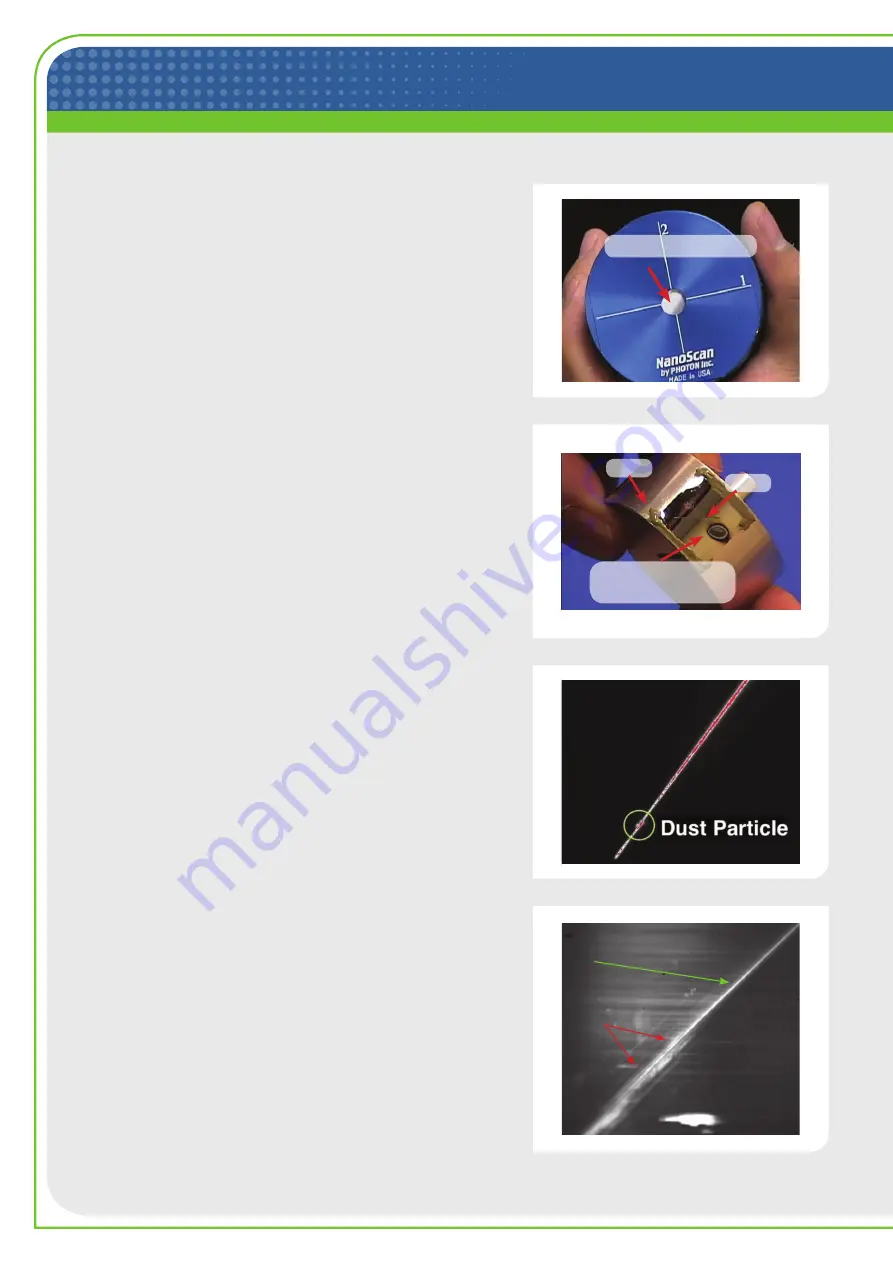
Slit damage Mechanical
Touching or contacting the slit substrates; for example,
attempting to clean the slit with a cotton swab, or
positioning a source such as an optical fiber, so that it
contacts the slit substrate
will
damage the slits.
Particle contamination results in plugged slits, and
most likely is due to operation in a high particulate
environment, or attempts to clean the slit.
nanoScan aperture care
The air slit and pinhole aperture substrates are very thin
and extremely fragile. Any physical contact will likely
damage them. Treat the slits with care; because of their
fragility, never touch them with anything!
Debris such as dust particle can loge in the very fine
openings of the slits or pinholes and obstruct the
passage of the incident beam, especially in the 1.8 µm
slits. This can compromise instrument performance,
resulting in erroneous or inconsistent measurements.
With slits, a few dust particles may or may not be a
problem, depending on the application and measurement
configuration, while contamination by many particles is
more likely to create a problem. With pinhole apertures
a single particle can be disastrous. Therefore, when the
system is not is use, it is recommended that the protective
plastic cap be used to cover the scanhead entrance
aperture to avoid possible contamination. If inconsistent
performance is observed and contamination by debris is
suspected a clean jet of compressed gas may solve the
problem, but excessive pressure may also damage the
apertures. Do not under any circumstances attempt to
clean the apertures with solvents!
If aperture contamination is suspected, it is recommended
that the unit be returned to Ophir-Spiricon for aperture
inspection, cleaning or replacement, and recalibration.
Laser
Laser damage to slits is caused by CW beams with
excessive irradiance, pulsed beams with excessive peak
irradiance, pulsed beams with excessive fluence, and
long-term exposure to high average power CW or pulsed
beams.
Excessive Laser Irradiance Slit Damage
Do Not Touch Drum
Drum
Slit
Laser Burn Hole Due to
Drum Not Rotating
Slit
Laser Damage
Magnified Image




























